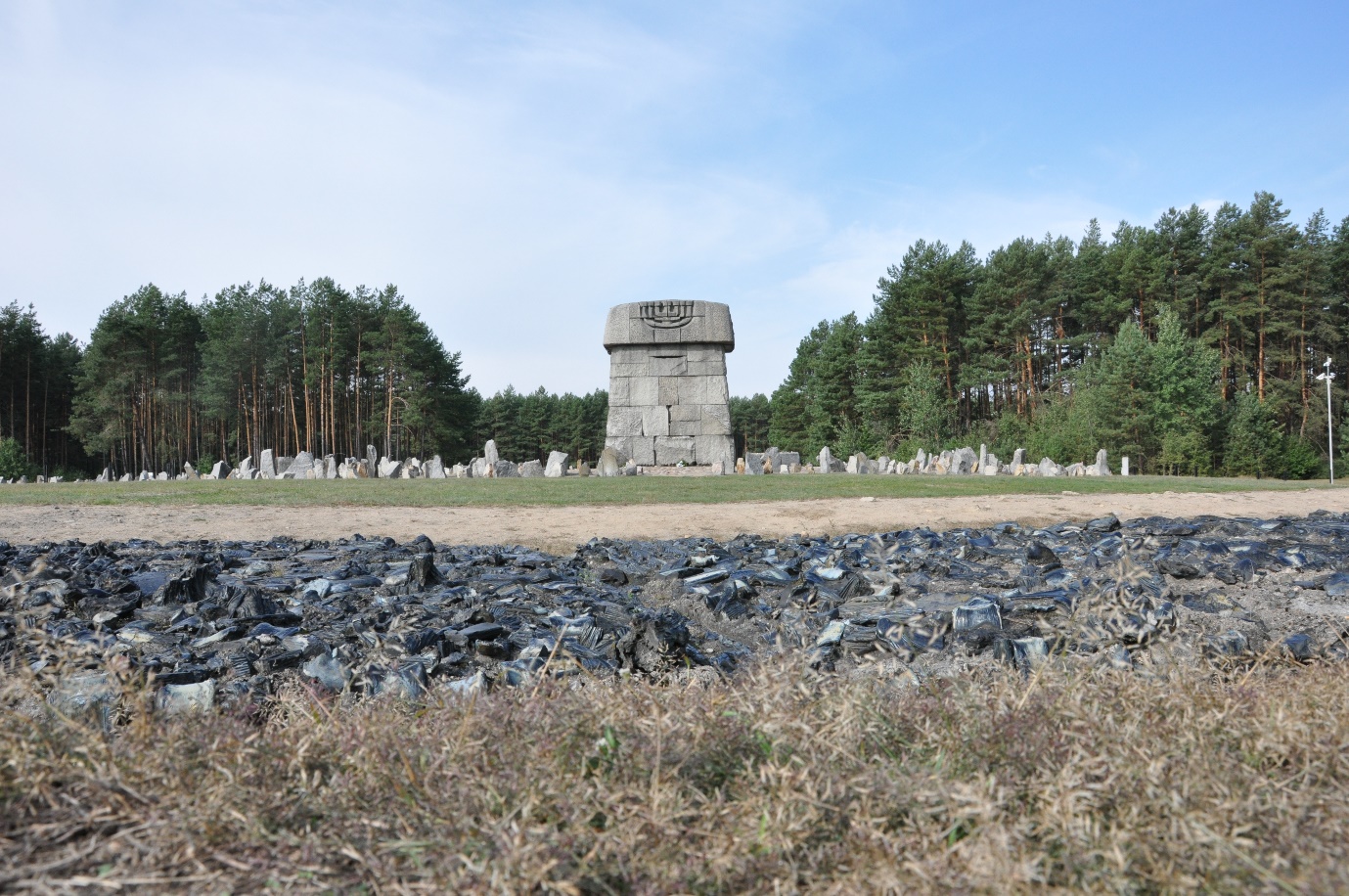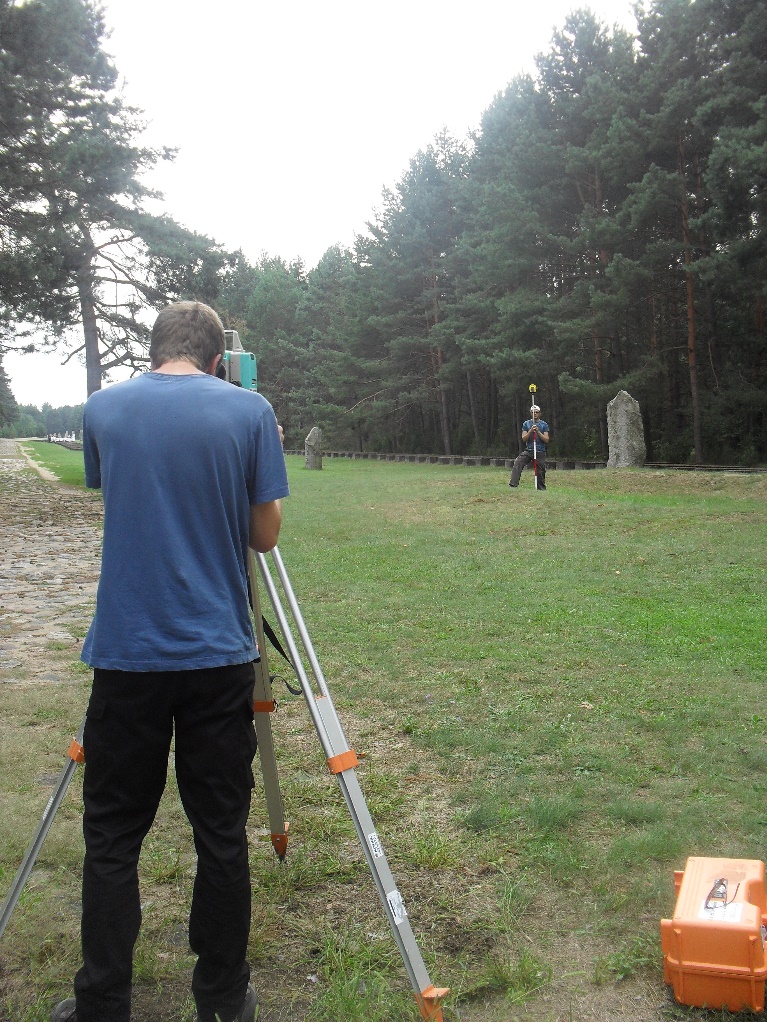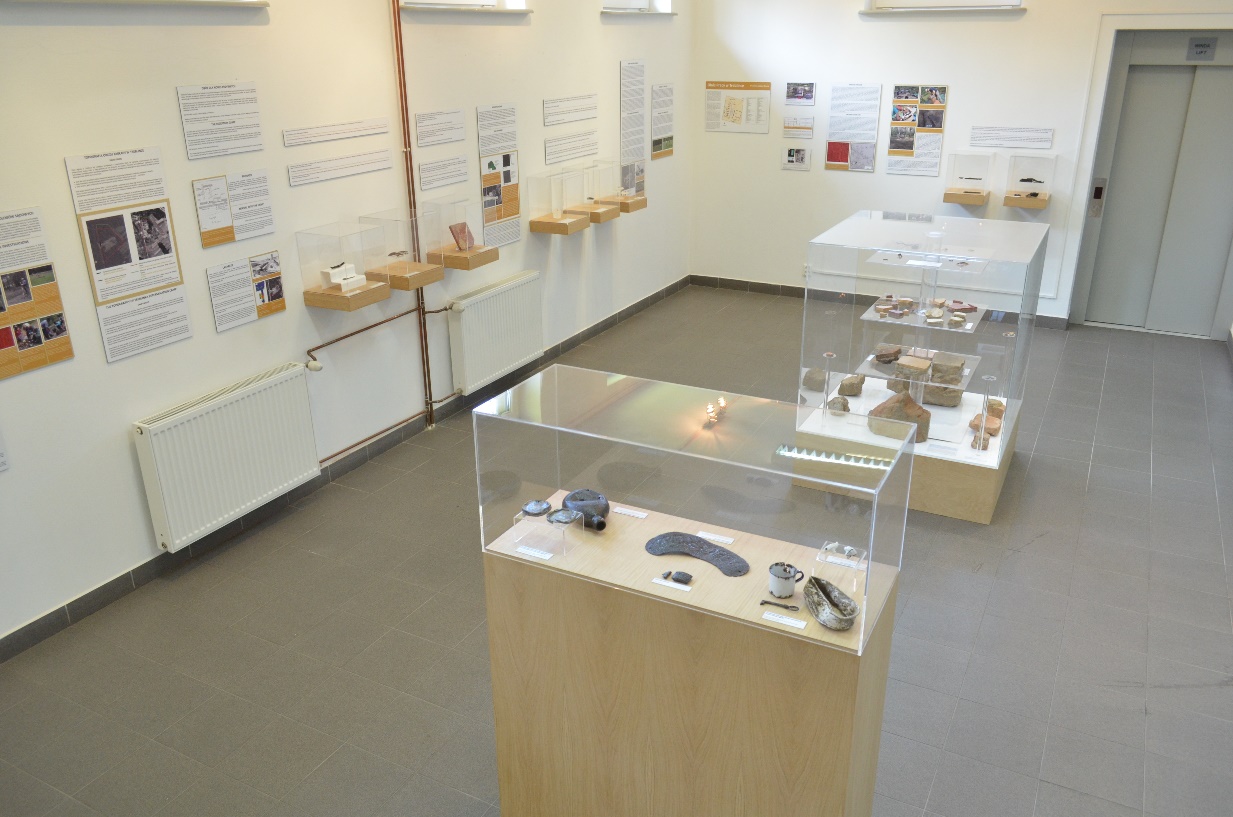by Caroline Sturdy Colls (C.Sturdy-Colls@staffs.ac.uk), winner of the EAA Heritage Prize 2016
In recent years, there has been a greater appreciation of the contribution that archaeology can make to the study of the recent past. Forensic and conflict archaeology have become sub-disciplines in their own right and archaeologists have applied their skills to the study of death, burial and violence across a broad range of periods and locales (e.g. González-Ruibal and Moshenska 2016; Groen et al 2015, Hunter et al. 2013, Carman 2013, Saunders 2012).
However, in 2007, when I first began to examine the possibility of researching Holocaust sites using forensic and archaeological methods, very few archaeological investigations at these sites of atrocity had taken place – and in fact many had been actively prevented. In part, this was due to the sheer scale of the crimes perpetrated but, as I quickly discovered, it was also due to the wide range of ethical, religious and political issues that continued to surround the Nazi occupation and the crimes against humanity perpetrated at this time (Sturdy Colls 2015, Sturdy Colls 2012). Most significantly, Jewish Halacha Law (which stipulates that human remains buried in a grave must not be disturbed, even if that grave was dug illegally) seemed directly at odds with traditional methods of archaeological excavation. The perceived sacred nature of Holocaust sites by people from all religions and walks of life also meant that excavation has been strongly discouraged, and even opposed, in the past (for examples see Sturdy Colls 2015, ch. 3).
That said, a lack of a desire for excavations does not equate to a lack of a desire to know what happened during the Holocaust. In fact, seven decades after the end of the Second World War, survivors, descendants, academics, the legal profession and the general public continue to ask questions concerning the extent and nature of the crimes perpetrated by the Nazis and their collaborators. For many people, identifying the locations of unmarked mass graves, locating physical evidence connected to the camps and ghettos, and gaining an understanding of what happened to the missing are increasingly important as more time passes.
For archaeology to assist in achieving these aims, whilst respecting the sensitivities surrounding this period, it was therefore apparent that a unique approach to the investigation of Holocaust sites was required. The Holocaust Landscapes Project was developed - drawing upon archival research, the analysis of aerial and satellite imagery, the collation of photographs and film footage, forensic walkover survey, remote sensing technologies and geophysical survey - in order to prevent disturbance to the ground and reveal new information about the hidden evidence relating to Nazi atrocities (Sturdy Colls 2015). It is my belief that this approach was essential because, when examining crimes that showed total disrespect for people from different races and religions, as archaeologists we should ensure that respect is at the very heart of our work.
This methodology was first applied at Treblinka in Poland, a complex consisting of a Nazi extermination and labour camp where between 800,000 and one million people were murdered. Despite the fact that Treblinka was the second largest killing site of the Holocaust, few above ground traces remained and gaps existed in the histories of both camps (Sturdy Colls 2014). Non- and minimally-invasive archaeological research - coupled with interviews with survivors and desk-based research – has provided new perspectives on the architecture and implementation of the crimes perpetrated (Sturdy Colls 2014; Sturdy Colls and Branthwaite 2016 and forthcoming). The locations of previously unmarked mass graves have been determined at, and in the vicinity of, the both camps. One of two buildings containing gas chambers was discovered in 2013, revealing that the Nazis modelled it on a bathhouse, as indicated by witnesses. As a result of these discoveries, and the successful location of the camps’ boundaries and a number of other structures, the first accurate maps of both camps are being created. This greater understanding of the camp’s layout allows us to better understand the experiences of the people who found themselves housed or murdered there. In short, the work has demonstrated how little we knew about the camps and, contrary to popular belief, just how much evidence survives on the surface and below the ground. In turn, this work has facilitated publications, a permanent and travelling exhibition, a television documentary, educational workshops, teacher training and a range of outreach activities. By taking an approach that considered the ethical and religious issues in relation to this site, this work has cemented strong, long-lasting working relationships between the archaeological team, the museum authorities and the Jewish community.

Fig. 1: The memorial marking the location of Treblinka extermination camp © Caroline Sturdy Colls
Alongside this ongoing research at Treblinka, work aimed at shedding new light on the nature of Nazi crimes has led me to investigate a number of other sites across Europe. In Poland, Serbia, Germany and even the British Channel Islands, this approach has identified previously unknown camps, allowed burial sites to be marked for the first time, provided new insights into the attempts by perpetrators to hide the traces of their crimes and led to knew understandings of the way that camps functioned (for examples, see Sturdy Colls 2015 and www.staffs.ac.uk/archaeology).
Looking beyond the camps, this approach is now being applied in Jewish cemeteries, as part of a new project entitled “Recording Cultural Genocide and Killing Sites in Jewish Cemeteries”, funded by the International Holocaust Remembrance Alliance (IHRA). This project aims to raise awareness of the causes and consequences of cultural and physical genocide (using Jewish cemeteries desecrated by the Nazis as a pilot case study), in order to directly tackle racism, xenophobia and hostility in the present. Utilizing techniques from history, archaeology, digital humanities, conservation and community engagement, this project is:
-
Conducting new research into the relationships between the destruction of property by Nazis and their collaborators, and the use of religious spaces as killing sites;
- Undertaking a series of “social action projects” at selected Jewish cemeteries where cultural and physical genocide occurred in the past, and where neglect and vandalism is occurring presently.
- Disseminating the results of (1) and (2) via a state-of-the-art digital platform.
In August 2016, our project team carried out a survey of the Jewish cemetery in Oświęcim, the Polish town renamed Auschwitz by the Nazis after their invasion of this region on the 3rd September 1939. We recorded damaged matzevah (tombstones) within the cemetery, located its original boundaries and recorded the surviving evidence of the camp that the Nazis built over part of the former cemetery area in three dimensions. It is our goal to demonstrate the evolution of this forgotten genocide that occurred just miles away from the eventual location of Auschwitz-Birkenau and reveal information about pre-war Jewish life that the Nazis were intent on destroying.

Fig. 2: The first archaeological survey at Treblinka extermination camp, carried out in 2010 © Caroline Sturdy Colls
Over the next three years, the Centre of Archaeology will also be part of a collaborative project that aims to examine the history and legacies of twentieth century internment camps across Europe. “Accessing Campscapes: Inclusive Strategies for Using European Conflicted Heritage (iC-ACCESS)” will examine what has become, in the European context, a dominant set of issues: the dynamics affecting the staging and presentation of some Holocaust camps into heritage, and the forgetting of others; the acknowledgement and presentation of Soviet campscapes in Eastern Europe; conflicted Holocausts, and simmering older ethnic/regional tensions exacerbated by the present EU crisis affecting the identity and future of the European integration project. Therefore, iC-ACCESS addresses the future role of the camps as monuments of the 20th ‘century of camps’ in the dynamic context of the European process of integration and the current age of (financial, geopolitical and refugee) crisis. Experts from the University of Amsterdam, NTNU Norwegian University of Science and Technology Trondheim, Staffordshire University, University of West Bohemia Pilsen, Freie Universität Berlin and Universitat Pompeu Fabra Barcelona will undertaken research at Westerbork (The Netherlands), Treblinka (Poland), Falstad (Norway), Jasenovac/Donja Gradina (Croatia/Republika Srpska), Bergen-Belsen (Germany), the former Roma camps Lety and Hodonin (Czech Republic), and the former uranium Gulag Labor camps in the Jáchymov region (Czech Republic), with the support of museums and memorials across Europe.
 Fig. 3: The Finding Treblinka exhibition, which includes objects found during archaeological excavations in 2013 © Michael Branthwaite
Fig. 3: The Finding Treblinka exhibition, which includes objects found during archaeological excavations in 2013 © Michael Branthwaite
Although there has been a lot of support for, and an increased interest in, “Holocaust archaeology”, over the few years, some people may still ask why this kind of work is important. Shouldn’t we just let this dark period of history rest? Why do we need archaeologists when we have historians who have researched this for decades? Or, conversely, why can’t we treat this period just like any other from the relatively distant past? My answer is this: for many people across Europe and throughout the world, the Holocaust continues to define their past, present and future, and many still need answers. In fact, the Holocaust may well be in the past in temporal terms, but it is only necessary to take a cursory glance at what is happening in Europe and elsewhere in the world today to quickly realize that many deep-rooted, historical prejudices still exist, that history is commonly politicized and used to negatively influence the present, and that, sadly, we often do not learn from our mistakes. I share a common aim with many of the survivors and descendants whom I have had the privilege to meet in the course of my work – to educate people about where racial hatred and intolerance can lead. Hence, this is why the forthcoming projects mentioned above emphasise the contemporary relevance of these important historic events.
Archaeological investigations at Holocaust sites offer us the opportunity to challenge popular myths and misconceptions; to answer the questions that historical research cannot; to encourage people who have never previously taken an interest in this subject to explore its historical and contemporary relevance, and – perhaps most importantly – to bring people together from a variety of backgrounds to discuss the causes and consequences of genocide. As Franco Nicolis, a member of the EAA Committee said at the EAA conference in Vilnius this year, that is ‘the power of archaeology’.
References
- Carman, J. 2013. Archaeologies of conflict. London: Bloomsbury.
- González-Ruibal, A. and Moshenska, G. 2016. Ethics and the Archaeology of Violence. New York: Springer.
- Groen, W.J.M., Marquez-Grant, N. and Janaway, R. 2015, Forensic archaeology: a global perspective. Chichester: Wiley Blackwell.
- Hunter, J., Simpson, B. and Sturdy Colls, C. 2013. Forensic Approaches to Buried Remains. Chichester: Wiley-Blackwell.
- Saunders, N. 2012. Beyond the Dead Horizon: Studies in Modern Conflict Archaeology. Oxford: Oxbow Books.
- Sturdy Colls, C. 2012. Holocaust Archaeology: Archaeological Approaches to Landscapes of Nazi Genocide and Persecution. Journal of Conflict Archaeology 7(2), 71-105. Available from: http://maneypublishing.com/index.php/journals/jca/
- Sturdy Colls, C. 2014. ‘Gone but not forgotten: Archaeological approaches to the landscape of the former extermination camp at Treblinka, Poland’, Holocaust Studies and Materials 3: 239-289.
- Sturdy Colls, C. 2015. Holocaust Archaeologies: Approaches and Future Directions. New York: Springer.
- Sturdy Colls, C. and Branthwaite, M. 2016. Treblinka: Archaeological and Archaeological Responses. Centre of Archaeology Book Series: Special Issue. USA: Amazon CreateSpace.
- Sturdy Colls, C. and Branthwaite, M. 2016 (In Press). "This is proof?: Forensic evidence and ambiguous material culture at Treblinka extermination camp. International Journal of History Archaeology.
Go back to top